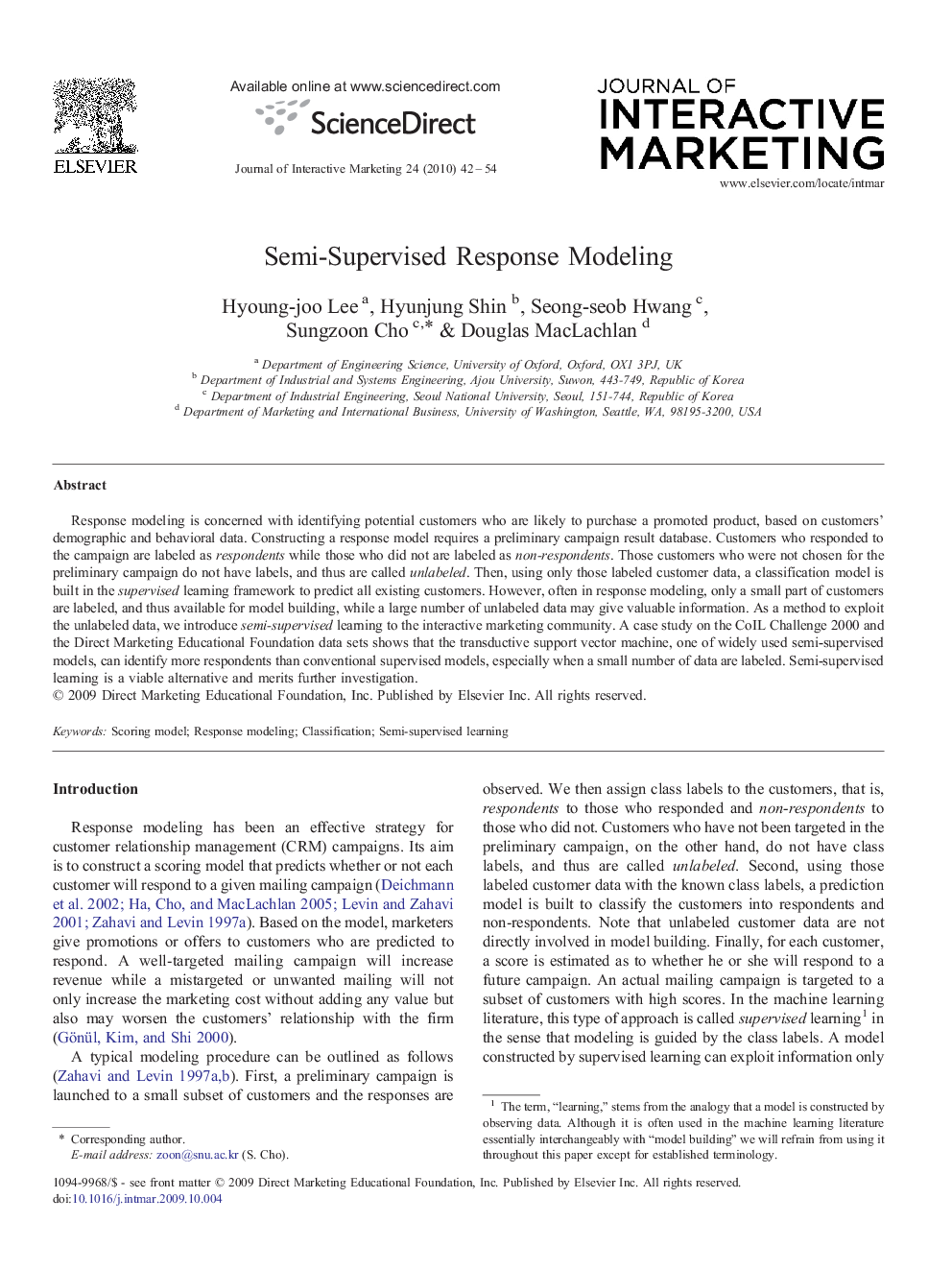| کد مقاله | کد نشریه | سال انتشار | مقاله انگلیسی | نسخه تمام متن |
|---|---|---|---|---|
| 886041 | 912974 | 2010 | 13 صفحه PDF | دانلود رایگان |

Response modeling is concerned with identifying potential customers who are likely to purchase a promoted product, based on customers' demographic and behavioral data. Constructing a response model requires a preliminary campaign result database. Customers who responded to the campaign are labeled as respondents while those who did not are labeled as non-respondents. Those customers who were not chosen for the preliminary campaign do not have labels, and thus are called unlabeled. Then, using only those labeled customer data, a classification model is built in the supervised learning framework to predict all existing customers. However, often in response modeling, only a small part of customers are labeled, and thus available for model building, while a large number of unlabeled data may give valuable information. As a method to exploit the unlabeled data, we introduce semi-supervised learning to the interactive marketing community. A case study on the CoIL Challenge 2000 and the Direct Marketing Educational Foundation data sets shows that the transductive support vector machine, one of widely used semi-supervised models, can identify more respondents than conventional supervised models, especially when a small number of data are labeled. Semi-supervised learning is a viable alternative and merits further investigation.
Journal: Journal of Interactive Marketing - Volume 24, Issue 1, February 2010, Pages 42–54